In this issue, our Technical expert Iain Ayre attempts a few tricks to track down a frustrating misfire on his Mk VI. Images: Courtesy of Author
My 1947 Mk VI always gets where it’s going, but the engine sometimes runs quite roughly. I had been assuming that it was due to the plugs fouling up because the bores are rather worn and the engine burns quite a lot of oil. Reducing the cruising speed to 50mph dramatically dropped the oil and petrol consumption but made absolutely no difference to the misfire. I had cleaned the plugs a couple of times, which seemed to help, but that may have been just psychological. I pulled the plugs again, after about a thousand miles up and down the country travelling between my menageries of freshly imported projects lodged with friends in England and my new house in Helensburgh, Scotland, and examined the plugs closely. They were not bad, and definitely not bad enough to disable the car. Indeed, if you’re bimbling along at a steady 50 using the hand throttle as a cruise control on a flat road, the engine runs as sweet as the proverbial nut.
The plugs after a thousand miles of driving up and down the UK. No6 (far right) is a bit carbony, but they are not fouled and would not cause a major whole-engine misfire at high revs
Therefore, something else was going on. With the Mk VI ensconced in my nice new garage at Toad Hall, it was time to hunt down the misfire. Theoretically it’s possible that fuelling could have caused some issues, but the mixture is either spot on or slightly rich, and the fuel pump sounded healthy. It was the whole engine stumbling, and it came and went, so fuel problems were unlikely. In any case, nearly all classic running problems are electrical.
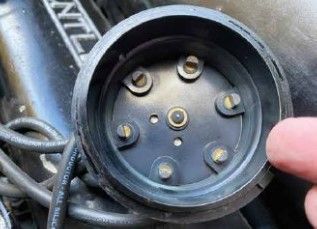
No sign of tracking inside the distributor cap, and the contacts are in good condition. No obvious problem here
Step 1: First step was to check the distributor cap for tracking, where the spark takes an alternative path across the cap: no, the tell-tale track marks were absent.
The rotor arm and contact points are also in good condition, clean and correctly gapped
Step 2: Next, the rotor arm. Again, no tracking, and it’s newish and in good shape. The points were also looking good, with no burning, and very light pitting. The gap was also correct, so they were not closing up. The plug leads are all new, but it was worth checking the main HT lead and the smaller LT lead from the small-coil contacts to the distributor. Again, new wires in both cases. Just because they’re new doesn’t mean they work, but age fractures couldn’t be an issue, and these are plain old-school copper wires.
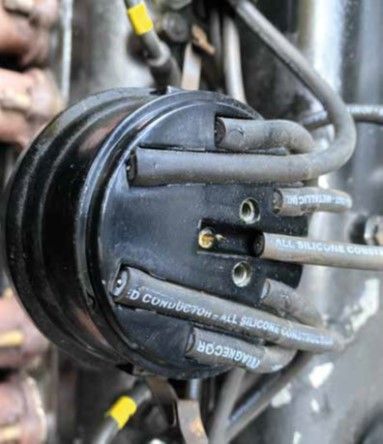
Old-school plug leads squish the wire on to a spike. I cut off halfan inch to give it a fresh contact
Step 3: Just in case, I chopped off half an inch from the HT lead and squashed it down on to the spike in the distributor cap to ensure a fresh metal-to-metal contact.
I substituted the condenser for a new one
Step 4: I then substituted a new condenser. The usual type found on a Bentley is bigger but they all do the same thing. With all that done, the idle was now very smooth indeed, but the engine still stumbled higher up the rev range.

The contact of the HT lead to the coil is fresh and clean. So the coil itself may have been the culprit in the rough running…
Step 5: That really only left the coil. Was it connected the right way round? Bentleys this old are positive earth, so the LT lead should go to the same polarity terminal as the car’s earthing (ie the positive), otherwise the engine will still run but you’ll get a weak spark – which could well cause a high-rpm misfire.

Substituting a new coil seemed to achieve an improvement, but the engine is still not Bentley smooth. New liners and pistons might be the next substitution
Step 6: That was correctly wired so the next substitution was a new coil. It’s the simple old-fashioned type without a ballast resistor. Luckily the local little accessory shop has a mature owner, who can subvert the modern system where you have to input your registration number in order for the internet to allow you to buy anything. He was able to order a coil from ‘The Resistance’, as it were. The new coil seemed to help a bit, and idling was pretty smooth now. But at higher revs this is still not a Silent Sports Car. Investigations continue…
The engine is now silky smooth at idle, but still misfires at higher revs. Annoying

Most of these fibre cam-drive gears were discreetly replaced with aluminium gears during routine services 70 years back. That may have been unnecessary
FIBRE CAM GEARS
There’s no real reason at all why I shouldn’t be able to use my Mk VI for long trips, once it’s running properly. Dan Moore in Whittlesey comprehensively sorted out the steering, suspension and brakes on the car while it was awaiting its UK registration (following my recent move from Canada) – so it’s only the misfire that’s spoiling the fun. The car is otherwise silky. Dan also interestingly dispelled the rumour that the fibre cam gears at the front of many early 4¼-litre engines need to be changed if they’re still in place. He showed me one that had covered about 200,000 miles; you could see some signs of wear, but it was still very usable. The factory discreetly changed these tweedy fibre gears for aluminium replacements during regular servicing in the 1940s and ’50s, with a W stamped on the engine to indicate this. My own 1947-built engine shows no sign of the W, so it may still have the fibre gear in place, still happily revolving.
Browse our full range of MKVI parts
Thank you to the Bentley Drivers Club (BDC) for giving us kind permission to use this article on our website.
Become a member of the Bentley Driver Club today, visit www.bdcl.org/membership


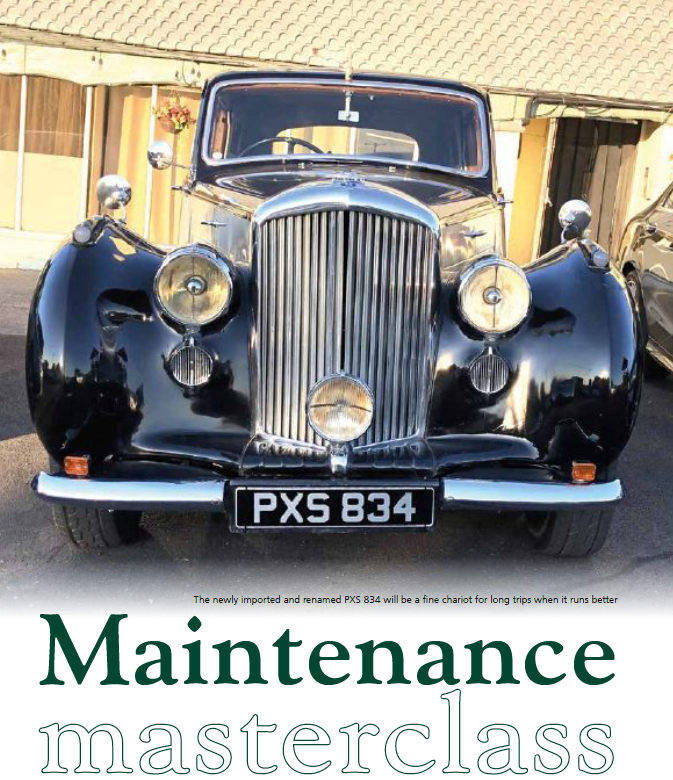

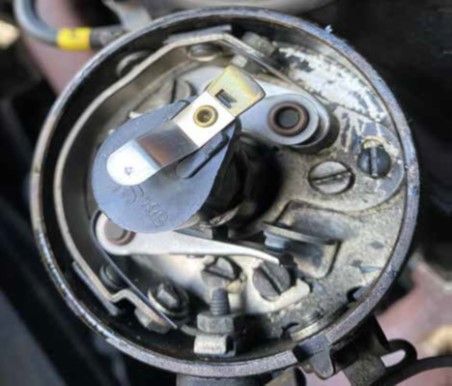
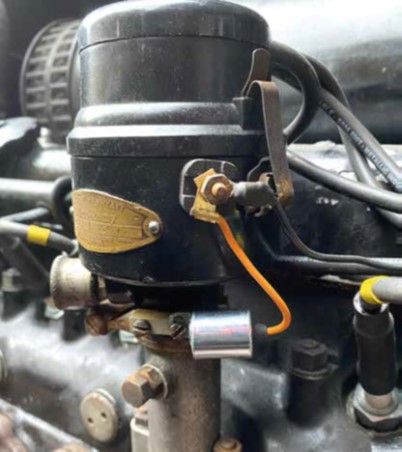

4 Oct 2023
11 Sep 2023
11 Sep 2023
11 Sep 2023
11 Sep 2023
11 Sep 2023